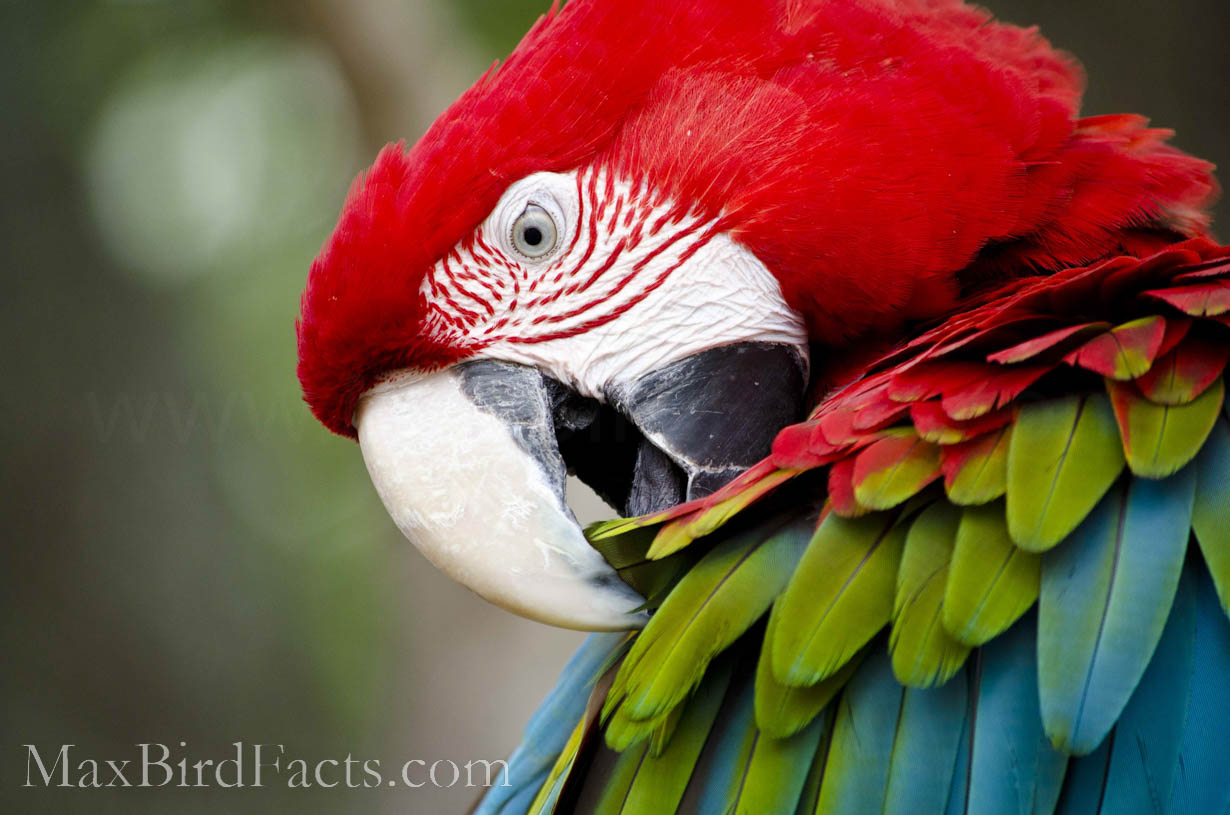
One of the first things you will notice when looking at a bird is its beak. There aren’t many other animals on the planet right now that have a keratinous beak anymore.
Turtles are one of the few that do, but there is fossil evidence that some dinosaurs had beaks and teeth. Early bird species had this characteristic as well, and, over time, they lost their teeth to save weight and be more efficient at flight.
After the mass extinction of the dinosaurs 65 million years ago, birds and mammals filled in the left vacant niches. With all these open spaces came the room for a lot of natural selection to make birds more efficient for their new lifestyles.
Adaptations to body size, beak size and shape, the foot and talons’ structure, and the aspect of their wings were all modified. But for now, let’s focus on their beaks.
All this adaptation raises a question, does a bird’s beak have to do with its diet? Short answer, yes, very much so! Nevertheless, I will be going more in-depth with what some of these beaks are in this article.
This is by no means an end-all list of beak types found in all birds. Still, it should be a solid backbone of information for you to build your knowledge and appreciation of beaks a little more. Also, I will be using beaks and bills interchangeably throughout the rest of this article because they mean the same thing!
Basic Beak Anatomy
The structure of a bird’s beak is relatively similar, regardless of the species. However, the jaws of the bird are a little different from our mammalian mouthparts.
The lower jaw (mandible) is the central moving portion of the mouth. Unlike virtually all vertebrates, their upper jaw (maxilla) can also move, known as cranial kinesis. This allows the birds to use their mouth to manipulate food and objects more easily.
Since they cannot use their arms because they are covered in feathers, cranial kinesis allows their mouth to act in the way of a hand. Parrots commonly are seen using both their feet and jaws to manipulate food.
The beak is comprised of a bone core covered by a keratinous sheath called a rhamphotheca. Keratin gives the beak its color and structure; keratin is the same material that makes up your fingernails.
Some birds also have a leathery flap of skin around the base of the bill called a cere. Commonly seen on raptors, but it is unknown what purpose it serves. Also found in parrots, wherein in some species, the skin will be a different color for the other sex.
Others have an operculum, a bony structure on top of the maxilla. The operculum protects ground-feeding birds, like pigeons, from debris getting into their nares (nostrils).
Now that I’ve put you through all that reading, let’s get to the beak types!
Woodpeckers
Woodpeckers have many adaptations to prevent their brains from scrambling as they pound on trees all day, but they wouldn’t be able to do that without a robust bill.
The bill’s typical structure is a taper from a sturdy base ending at a narrow, chisel-shaped tip. The gradual and consistent taper gives the woodpecker’s beak strength while also not being too heavy or large.
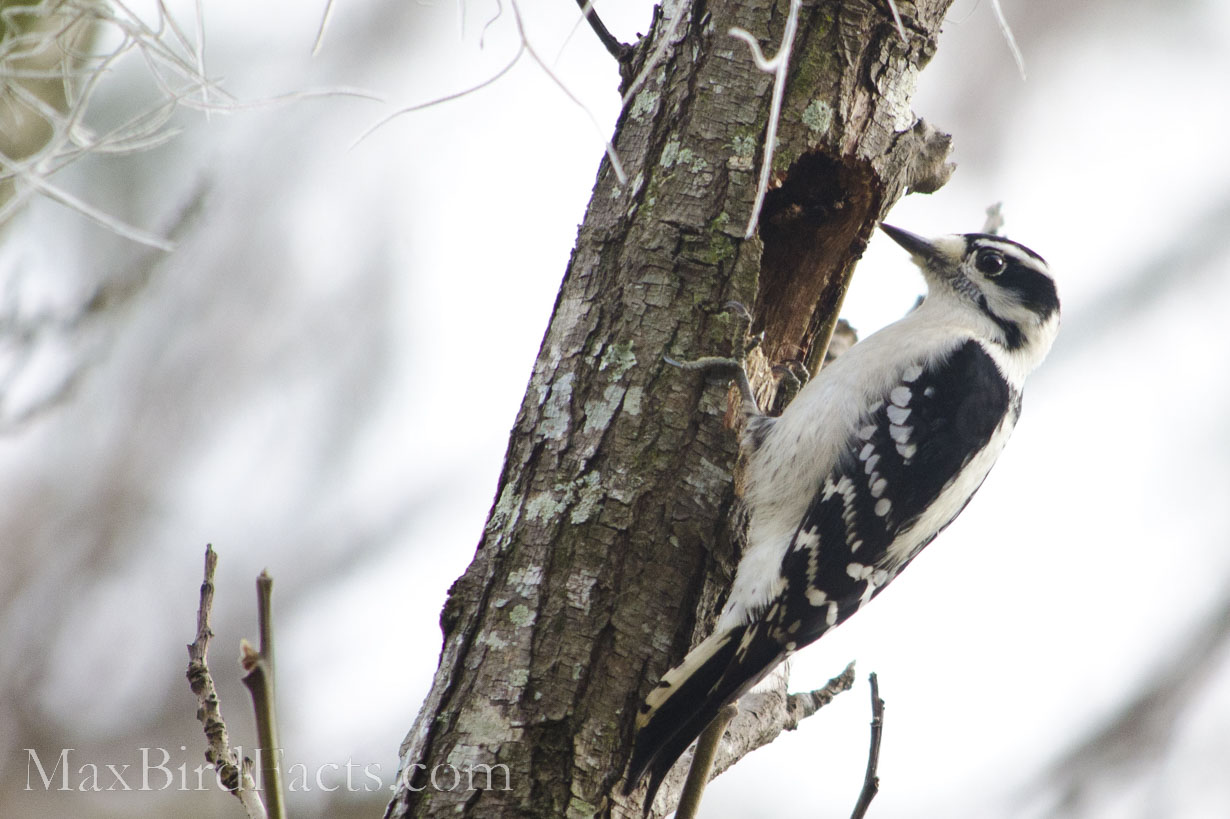
This beak type is the perfect demonstration of the keratin sheath and bone core working together. The keratin gives the beak some flexibility, while the bone provides the structure.
If the beak was comprised of just bone, all the force of the impact would be transferred into the bird’s skull and probably cause trauma. On the other extreme, if the beak was solely keratin, there wouldn’t be enough support for them to drill into trees.
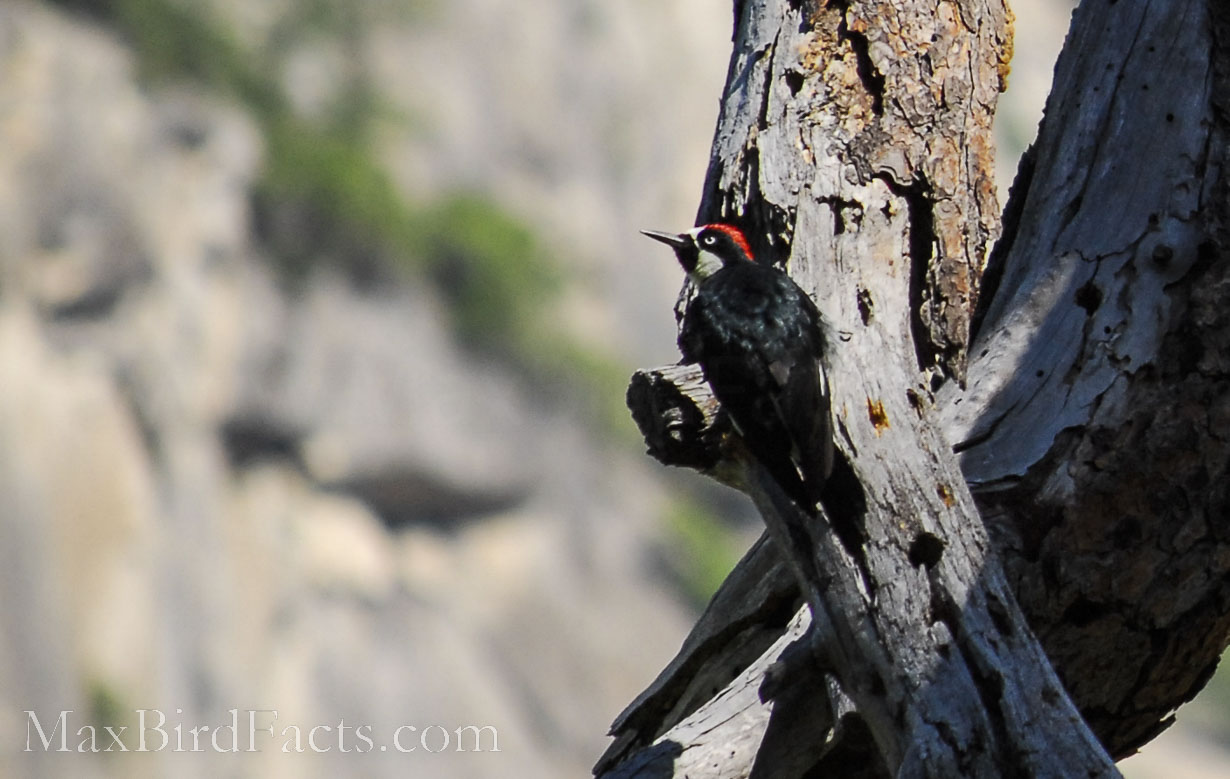
The role of woodpeckers is exceptionally beneficial to the environments they reside in. Some species need to nest in the holes woodpeckers create in trees but cannot make the holes on their own. Woodpeckers are known as primary excavators, where they are the ones making the cavities.
Other birds, such as owls, parrots, some songbirds, and many other nonavian species, are called secondary cavity nesters. These animals cannot make cavities but require them for their nesting behaviors.
Most of the time, however, woodpeckers are drilling for food rather than creating a home. Nearly every woodpecker species are insectivorous but will also consume plant material (fruit, nuts, seeds, etc.).
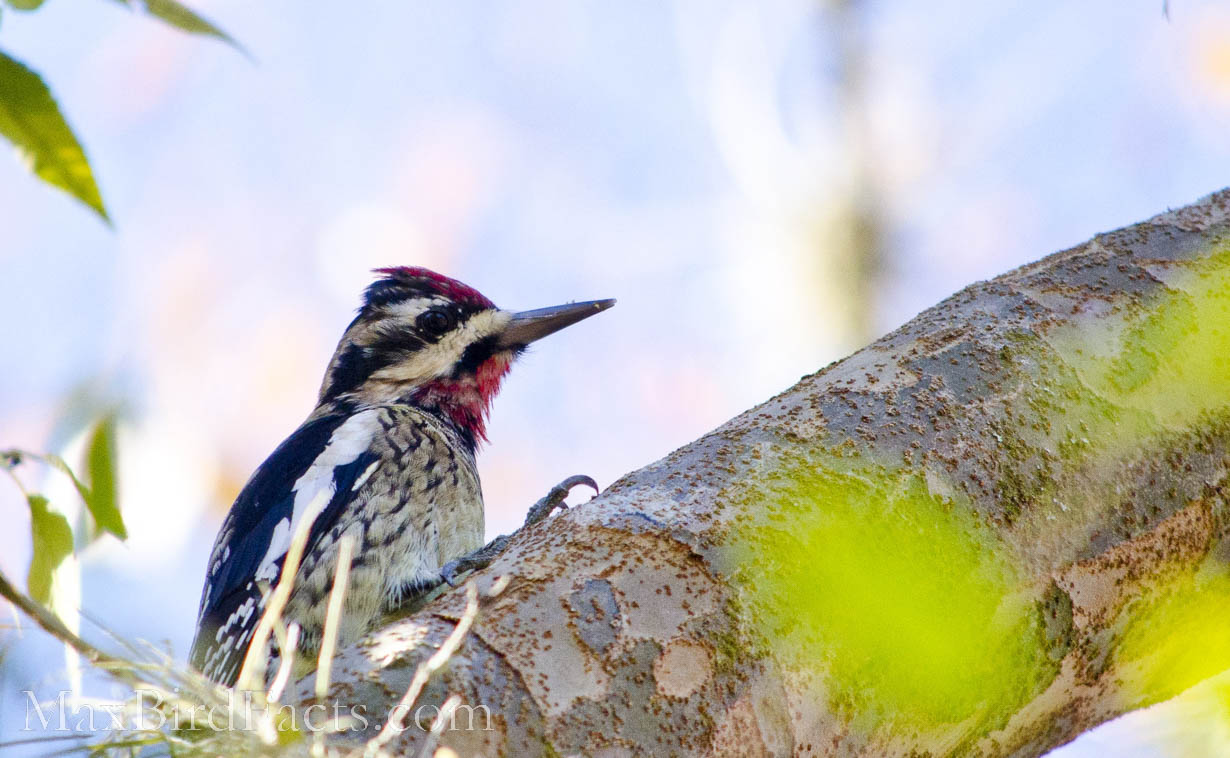
Some species in the family Picidae will also feed on tree sap; these are the Sapsuckers!
They drill into trees to get to the sweet liquid they produce. This leaves open wounds in the trees that other animals can take advantage of as our next bird!
Nectar
On the polar opposite end of the spectrum from the woodpecker are hummingbirds!
Extremely thin, needle-like bills that are perfect for sticking into flowers and collecting nectar. The lifestyle of these birds requires this food source.
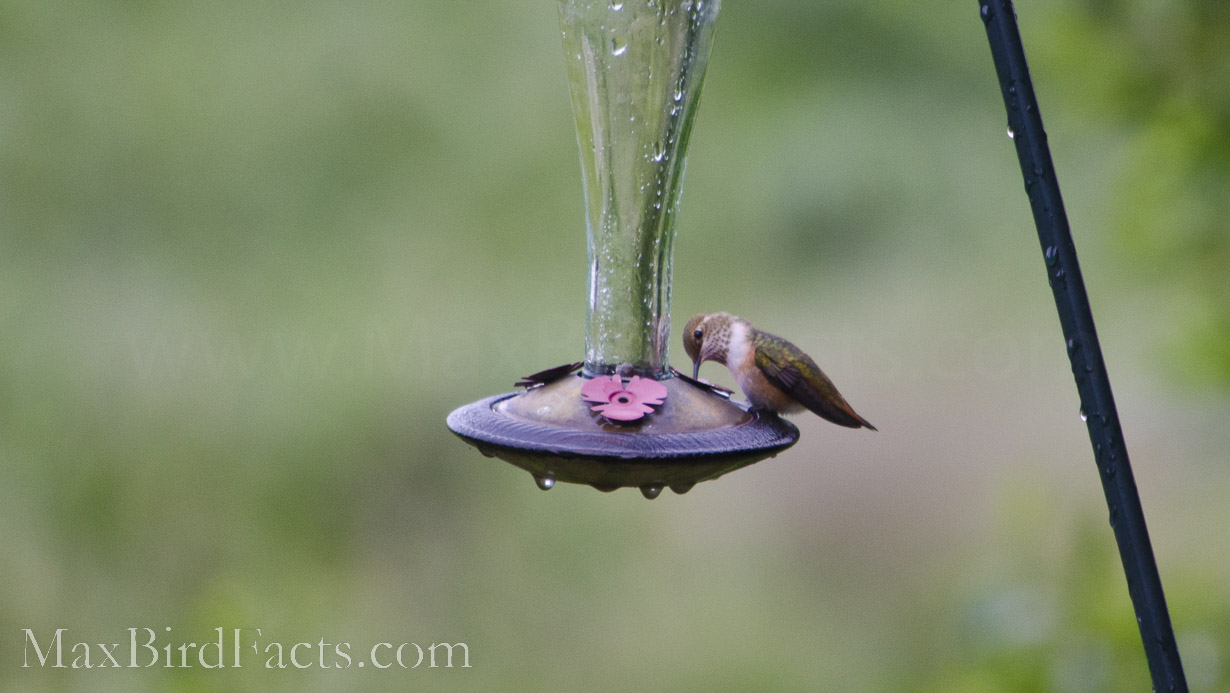
Hummingbirds have one of the fastest metabolisms in the animal kingdom, and pure sugar is an excellent fuel to keep them going.
They share an adaptation with some woodpeckers. Hummingbirds have barbed tongues, which increase the tip of the tongue’s surface area to help these birds collect nectar more efficiently.
Like many other birds, they will also consume insects as a protein-rich supplement. Their ultrafine bills are perfect for picking off small insects on the wing.
Hummingbird nests need this precision while making their nests, usually made of various plant materials, feathers, and spiderwebs to lash them together.
The spiderweb allows the nest to grow with the young, so these birds can make as small a nest as possible to keep their offspring concealed from predators.
Insectivores
Nearly every bird preys upon insects. Some will specialize in hunting them, while others only collect them for their hatchlings.
Birds that specialize in hunting insects have a short, fine-point bills that can snap shut swiftly. They usually will also have some feathers around the jaws that act in a very similar way as whiskers, termed rictal bristles.
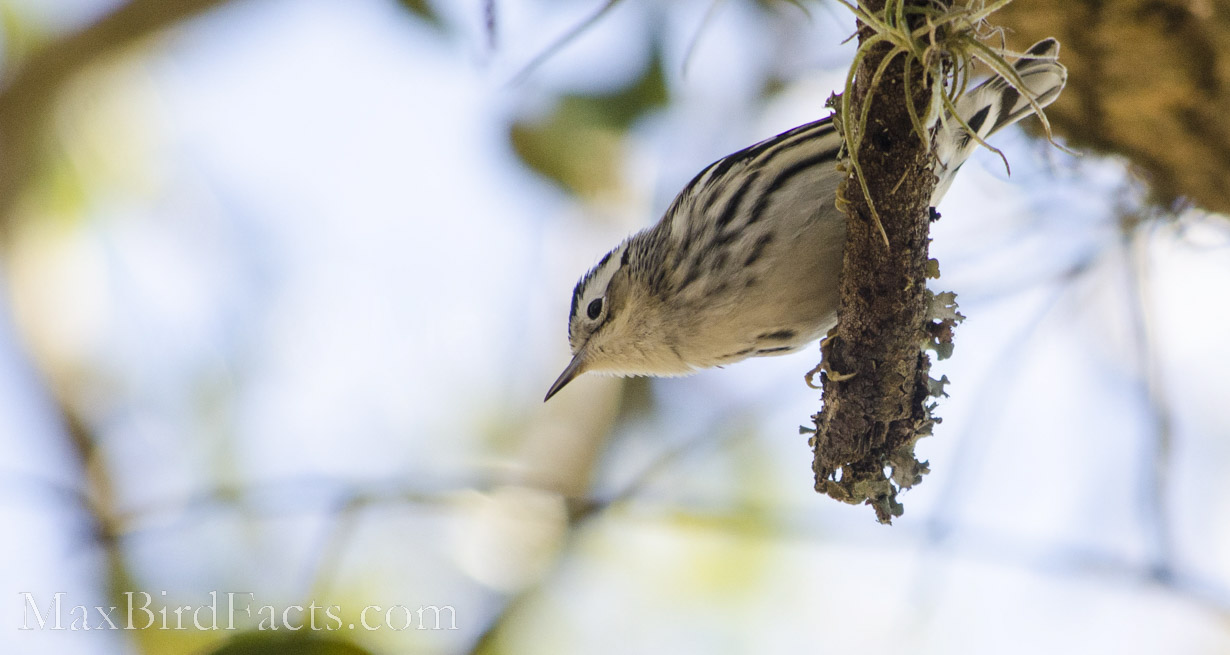
There are two principal ways birds will hunt bugs, on the ground or in flight. If they choose to pursue on foot, they will typically go for non-flying insects. This might seem obvious (because it is!), but why try to catch a bug that could fly away when there are so many that are just crawling around?
Instead of adapting to be more agile in the air to catch fast-moving insects, they adapted to catch their prey on many different surfaces.
Having sharper talons, greater grip strength, and slightly longer beaks to probe into crevasses easier. This way, they can run around tree branches and cling to the underside of a limb to find hiding prey.
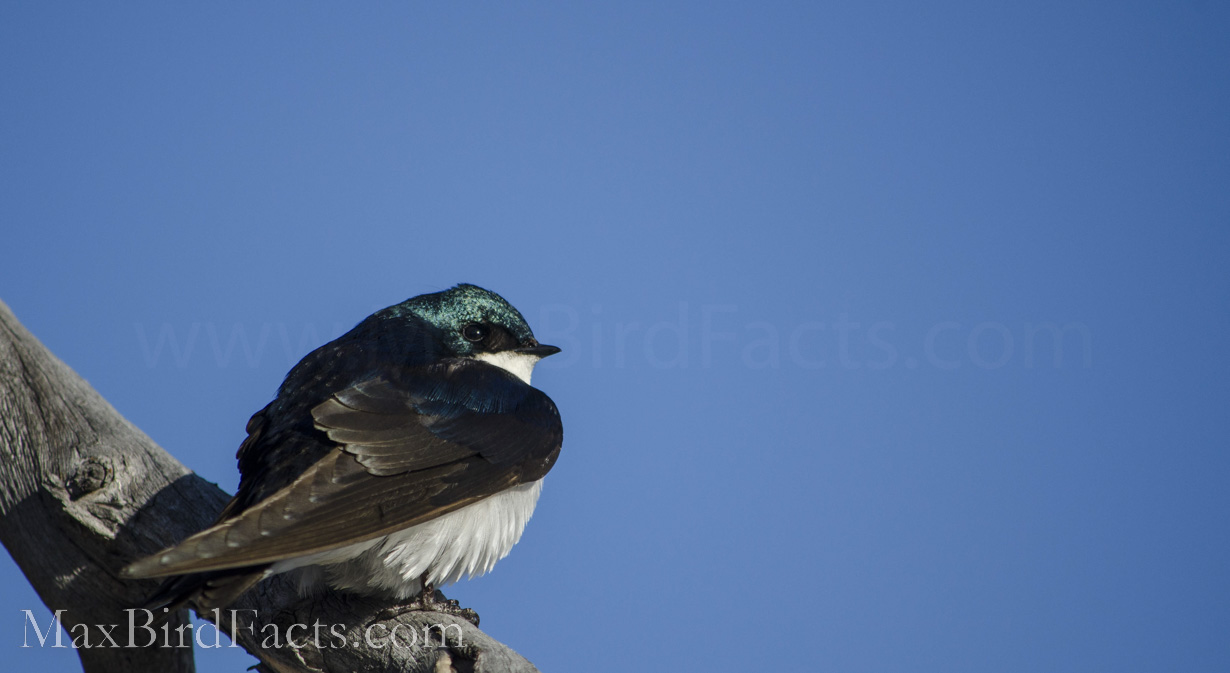
On the other front, birds that hunt in the air need a myriad of adaptations to help them. Wings with a high aspect ratio (long and thin) can be great for staying aloft without using too much energy, but this comes at the cost of maneuverability. Along with compacted, wider beaks with rictal bristles to help them sense and catch their prey.
The most efficient way of hunting flying insects like gnats and mosquitos is to fly through large groups of them, similar to a shark attacking a bait ball of fish.
That doesn’t mean they won’t go after solitary insects like dragonflies and bees. Those will require a lower aspect ratio that will give the bird better maneuverability and outpace the speedy bug.
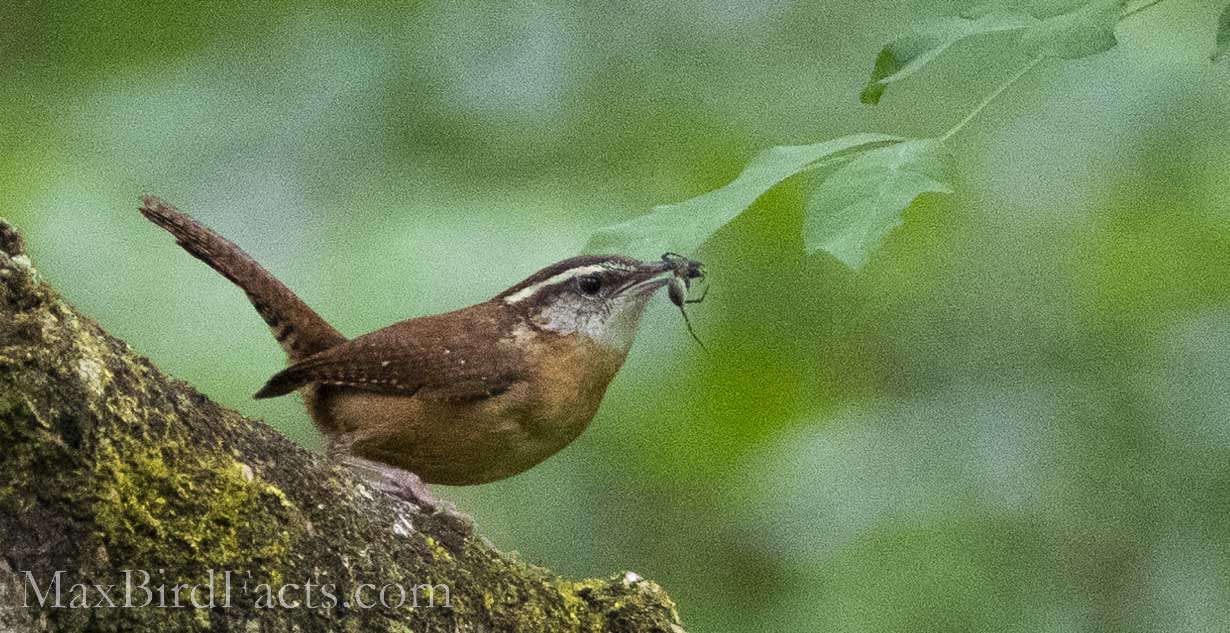
As I stated earlier, almost every bird will hunt insects for its young. Bugs are a huge source of protein, helping the baby birds rapidly grow so they can develop enough to fledge in a matter of weeks!
Even birds that are almost entirely herbivorous will still bring their hatchlings insects to help them grow. All this protein allows the young birds to fledge quickly. Most songbirds will be able to leave the nest within two weeks.
This can take up to a month with some larger birds like woodpeckers. Like Bald Eagles, birds of prey can stay in the nest for almost four months after hatching to fully develop!
Granivores
Probably one of the more generalized beak types, but some features make seed-eating beaks unique!
Seed-eating beaks are short and stout with powerful muscles attached. Usually with a very slight downward curve and flat edges towards the rear to give them the best leverage to crack open the grain.
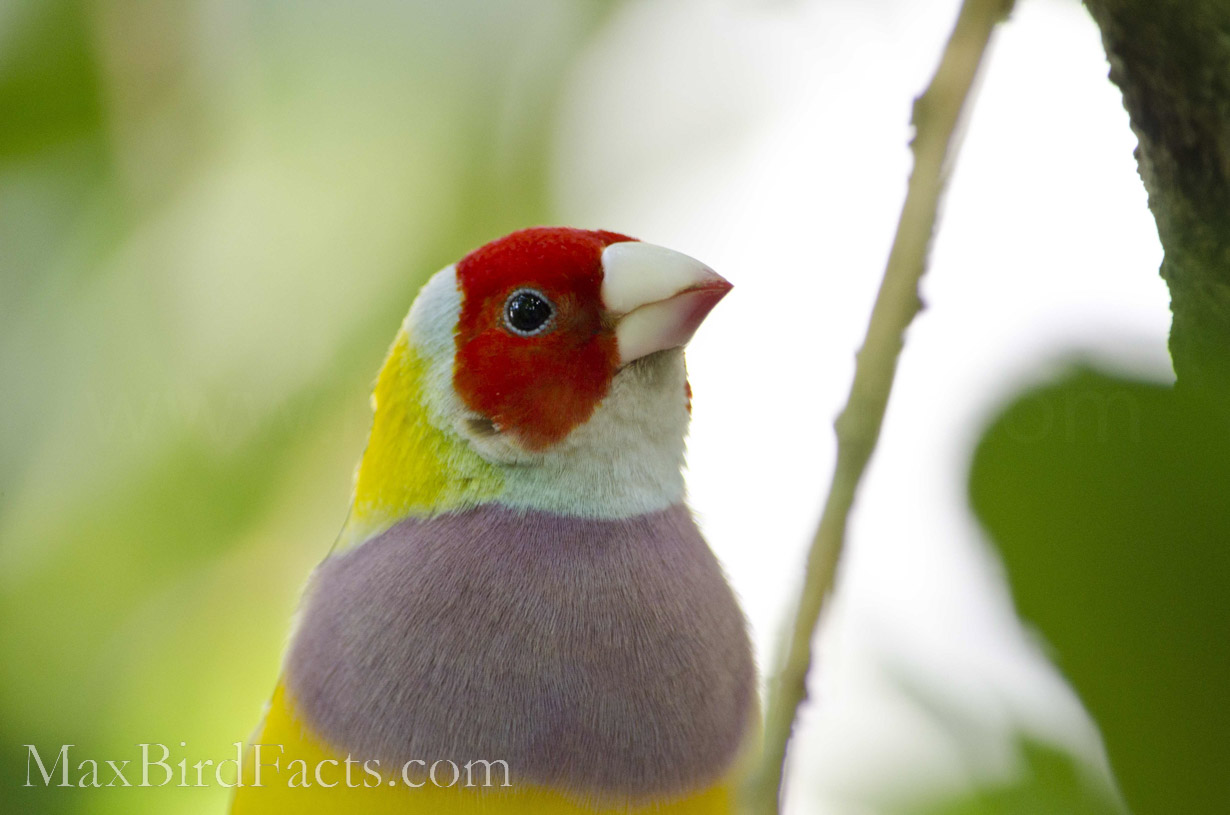
These are the birds you will usually associate with songbirds or feeder birds. They have a reasonably generalized diet: seeds, fruit, flowers, insects, etc. But the beak structure fits this more general stance because it isn’t specific to any one seed type.
They can adapt to changing environments and food sources a little easier. That isn’t to say there are no specialized granivorous birds, but that is a focus for a future article!
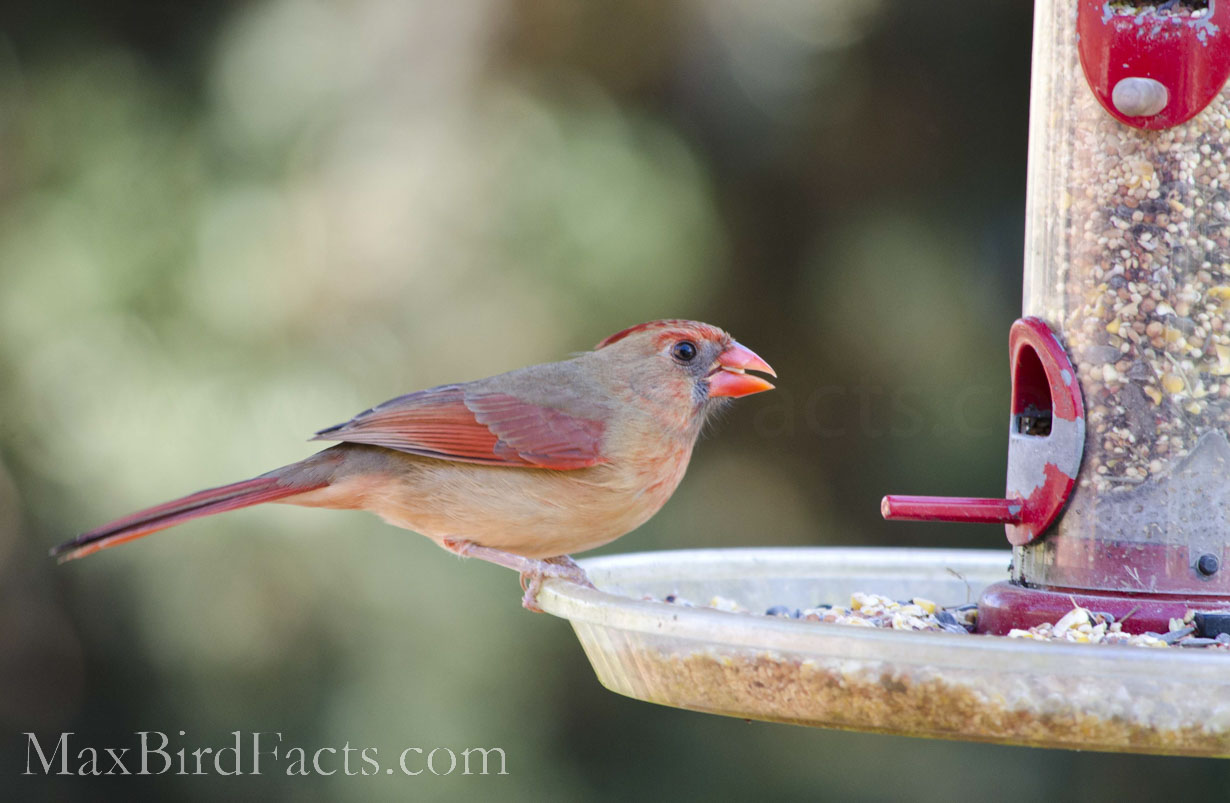
A lot of these birds show sexual dimorphism and territorial behaviors. The food they eat can even be seen through the coloration of their feathers.
Northern Cardinals have to eat foods with carotenoids, which produce the red, orange, and yellow colors birds use in the aspect of their feathers.
Carotenoids cannot be produced naturally by the bird. They have to be consumed by the birds if they want to maintain the proper coloration.
Suppose a cardinal cannot acquire enough carotenoids through its diet. In that case, their feathers’ aspect will dull, and they will be less attractive to females.
Males will have to find territories rich with food to draw in females while also maintaining their plumage to stay attractive.
Nutcrackers
Like granivorous birds, nutcracking birds need a stout, robust set of jaws to crush the hard nuts. Simply, most of the adaptations found in seed-eating birds just need to be scaled up to fit a nut-eating bird.
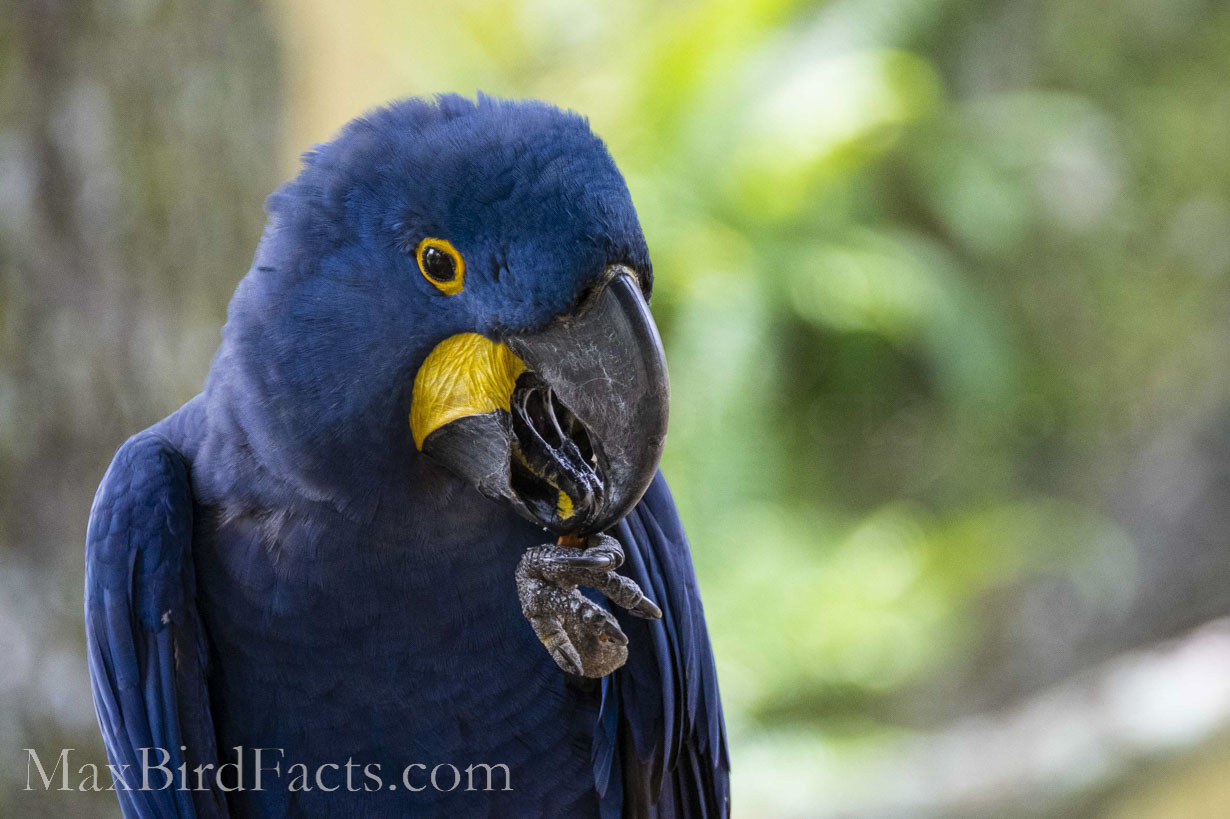
Parrots are the poster child bird for nutcrackers, having short bills to maximize their bite force and a sharp tip to rip off the fruit’s flesh. The beak edges seem to be rough, with long flats close to the hinging portion, similar to our granivorous birds.
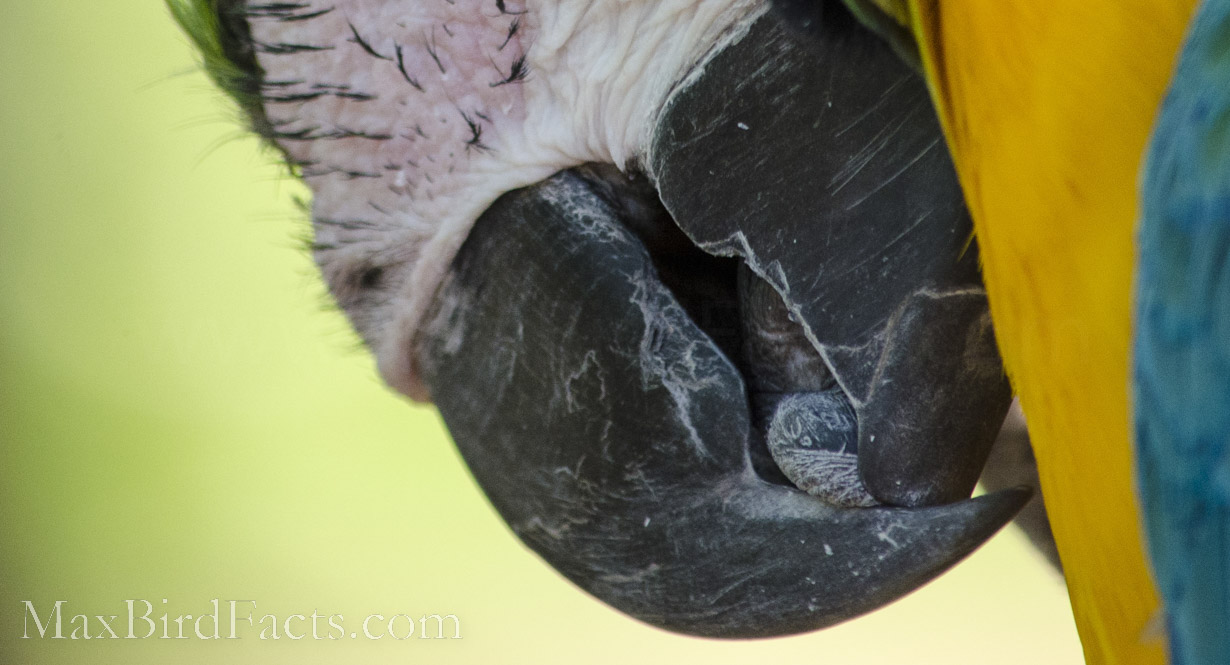
The mandibular bill (lower jaw) even has a sharp upward curve near the tip, possibly locking the nut in place. This interfaces with the downward turn of the maxillary bill (upper jaw).
The bill’s rough edge creates areas where pressure can be maximized to crack the nut’s tough exterior; just think of the serrations on your average nutcracker at home!
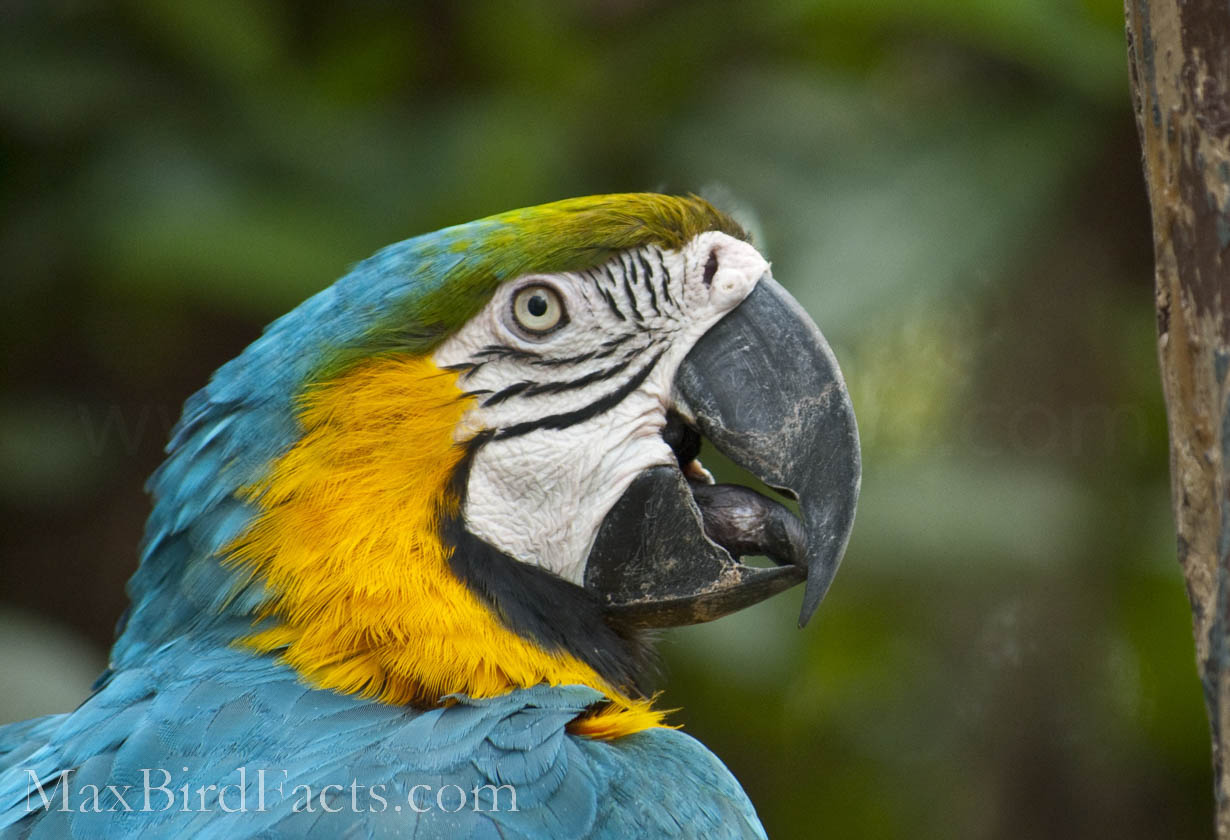
Macaws have also been observed to travel to riverbanks to bite off chunks of clay and consume them. It’s not fully understood why these birds do this, but there are two main theories.
The first and most supported theory is that they consume clay as a mineral and vitamin supplement. The largest assemblages of macaws are found in washouts with the highest sodium concentrations. Sodium is an essential electrolyte. With the rainforest’s heat and humidity, this would be necessary to acquire to stay hydrated.
The second theory states that these birds consume the clay to act as a barrier against potential toxic food sources they consume. This is a likely benefit the macaws are gaining through consuming the clay.

The issue with the second theory is many animals around the world consume clay as a mineral benefit. This fact helps to substantiate the claim of the first theory.
The clay can be firmly attached to the washouts, and the powerful jaws of macaws are necessary to pry it free. The minerals in the clay can also be desirable to animals that aren’t able to obtain them.
Like the woodpeckers creating cavities in trees other animals benefit from, the clay broken free, not consumed by parrots, falls to the ground where other animals can benefit from it.
Frugivores
Fruit can be a massively beneficial food source for birds, and many will take advantage of it. Some species have adaptations to make it easier to take full advantage of this food group.
Frugivorous birds have elongated bills with serrated or sharpened edges. These serrations are what separate this beak type from others.
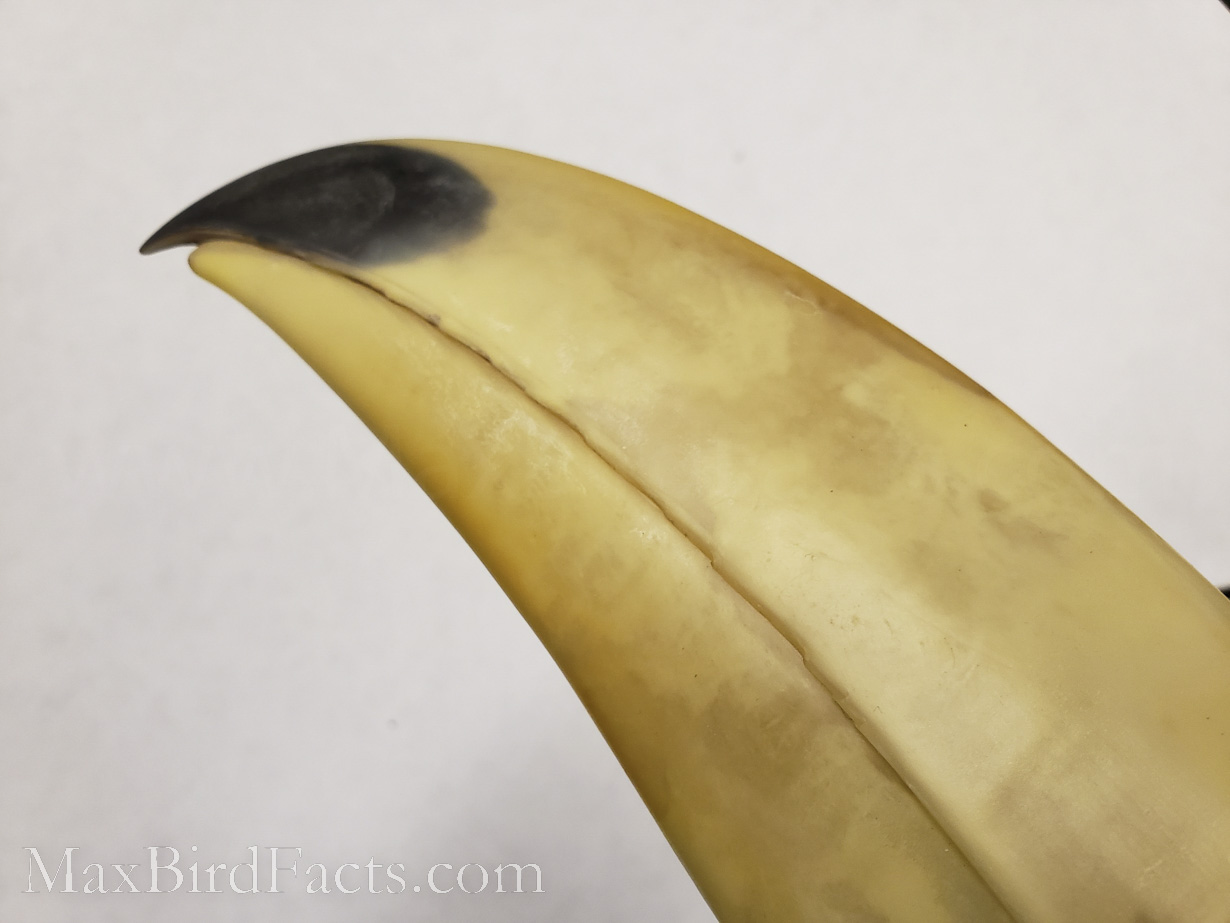
Some fruits have thick exteriors to protect the flesh and seeds inside.
Avocados can be troublesome for most birds to break into because of their leathery exterior. The serrations on a frugivorous bird can easily slice through the skin to extract the fatty flesh inside, just like a steak knife.
Foods like avocados are a massive bonus for an animal’s diet that typically feeds on sugary fruit. The fatty acids found in this fruit are hard to find in the environment where they grow.
The inclusion of this nutrient-rich food can be beneficial for birds having to migrate. Before migrations, birds will pack on fat, and if they can find food sources that are almost entirely fat-based, that can save them time and energy while foraging.
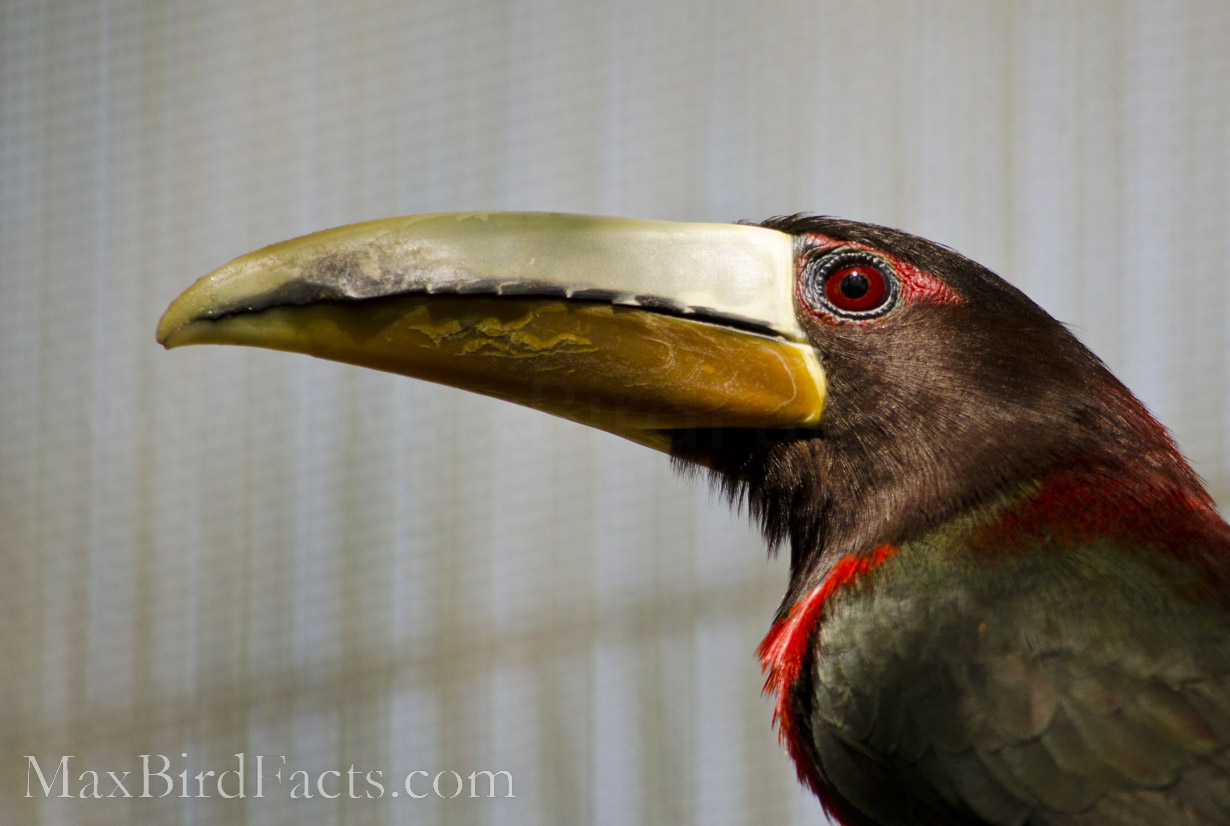
Aracari and tucans have a very iconic bill. Even though it is a large beak, compared to most other birds in their body size, the beak is relatively light due to it being mostly keratin. The funny thing about this family of birds is they are cousins of woodpeckers!
Since they aren’t using their beaks to drill holes into dense trees, they opt to have more keratin than bone. This allows the aracari to have an enormous beak but stay light enough to still fly efficiently.
To Be Continued
I hope you enjoyed the first installment of this article. It has taken me down a rabbit hole, and I think it will be more digestible to continue this in the second part.
Part 2 will consist of generalists, probers, filter-feeders, stabbing birds, fish grabbers, open water, carnivores, and specialists!
Leave a comment below if you have any other beak types you want to learn about!
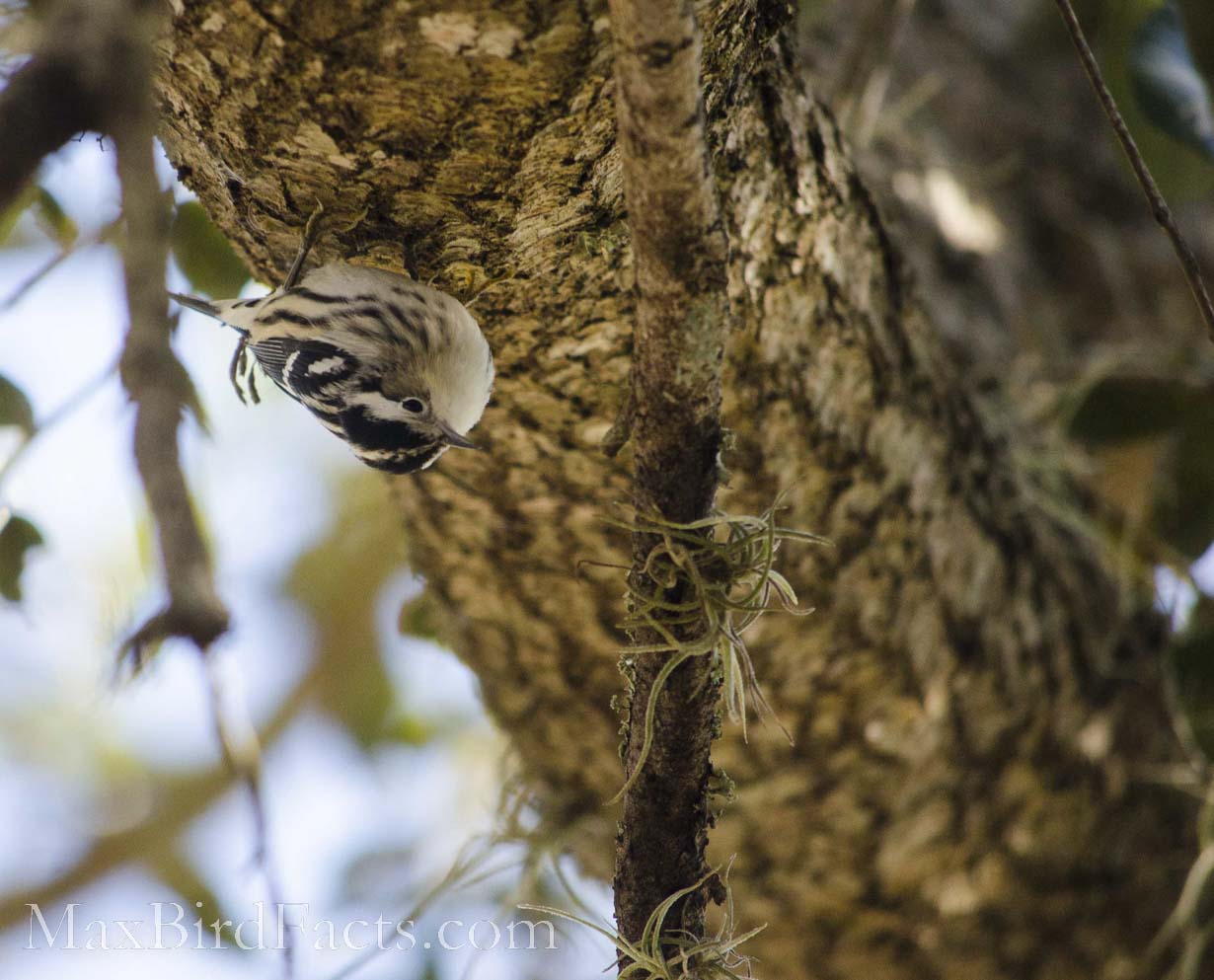
Make today great!
Max
Resources
“Acorn Woodpecker Overview, All About Birds, Cornell Lab of Ornithology.” Overview, All About Birds, Cornell Lab of Ornithology, The Cornell Lab, 2019, www.allaboutbirds.org/guide/Acorn_Woodpecker/overview.
“Eating Spiders Can Fix a Bird Brain.” Discover Magazine, Discover Magazine, 12 Nov. 2019, www.discovermagazine.com/planet-earth/eating-spiders-can-fix-a-bird-brain.
Lee, Alan T. K., et al. “Parrot Claylick Distribution in South America: Do Patterns of ‘Where’ Help Answer the Question ‘Why’?” Ecography, vol. 33, no. 3, 2010, pp. 503–513., www.jstor.org/stable/20751597. Accessed 11 Oct. 2020.
Marshall, Jenna. “New Paper Explores Why Peru’s Parrots Eat Clay.” Phys.org, Phys.org, 4 Aug. 2017, phys.org/news/2017-08-paper-explores-peru-parrots-clay.html.
Powell, Hugh. “How Long Do Birds Incubate Their Eggs and How Long Do Chicks Stay in the Nest?” All About Birds, The Cornell Lab, 10 July 2015, www.allaboutbirds.org/news/how-long-do-birds-incubate-their-eggs-and-chicks-stay-in-the-nest/.
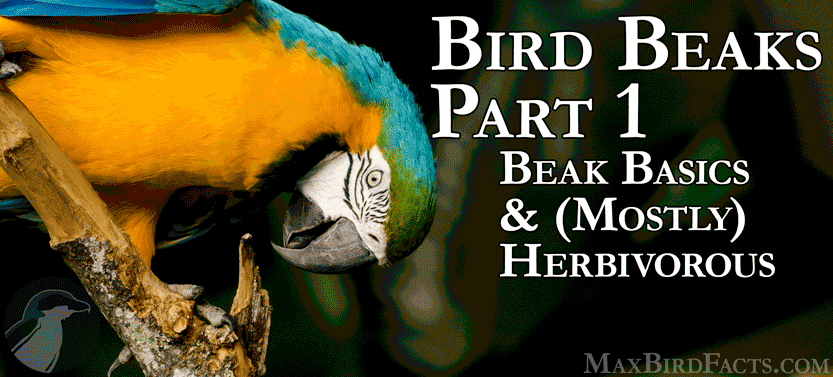
Pingback: Do Birds Have Tongues – How To Manipulating Food Without Hands – Welcome to MaxBirdFacts.com!!!
Pingback: Bird Beaks Part 3: The Specialization and Perfection of Falcon, Owl, and Vulture Beaks – Welcome to MaxBirdFacts.com!!!
Pingback: Bird Beaks Part 2: The Different Beaks of Hawk-like Raptors (Accipitriformes) – Welcome to MaxBirdFacts.com!!!